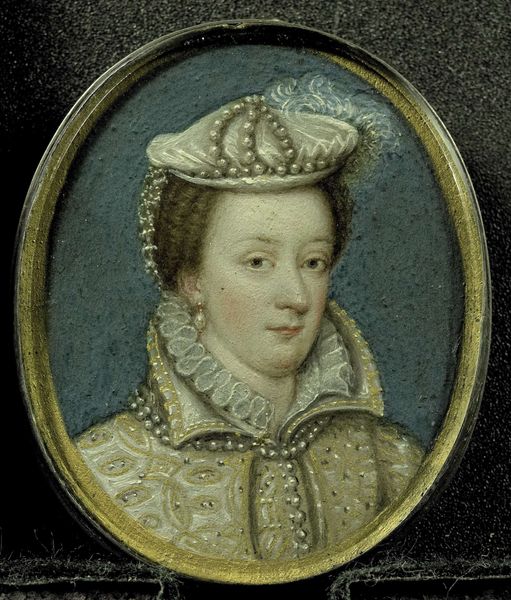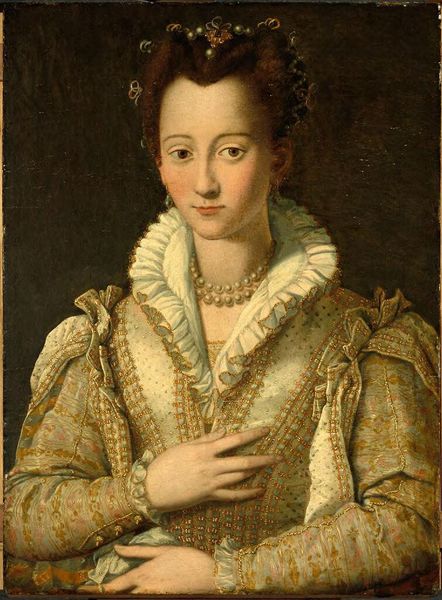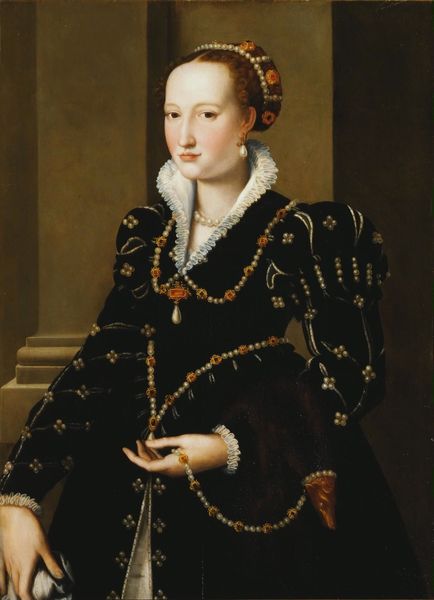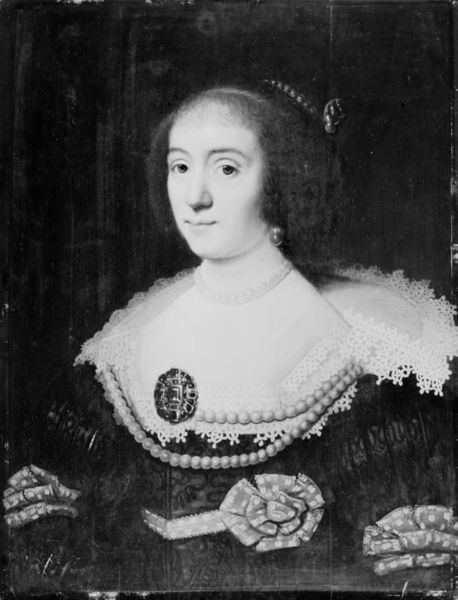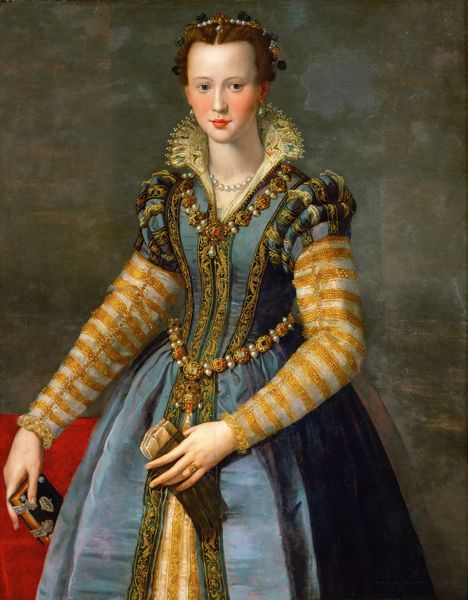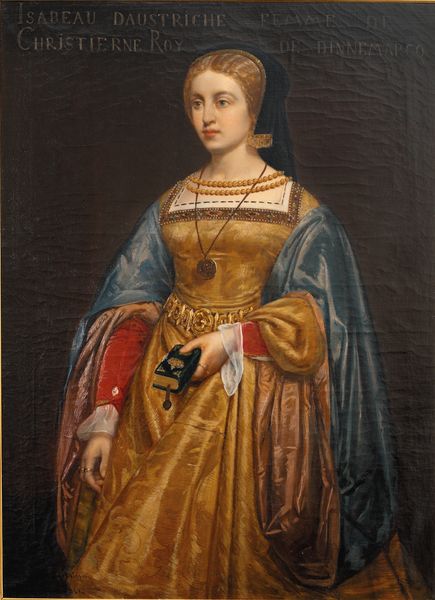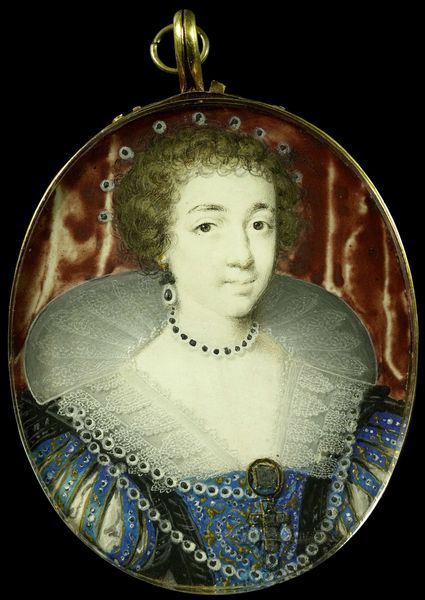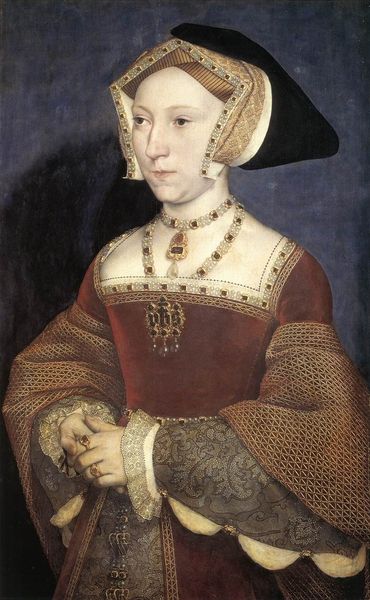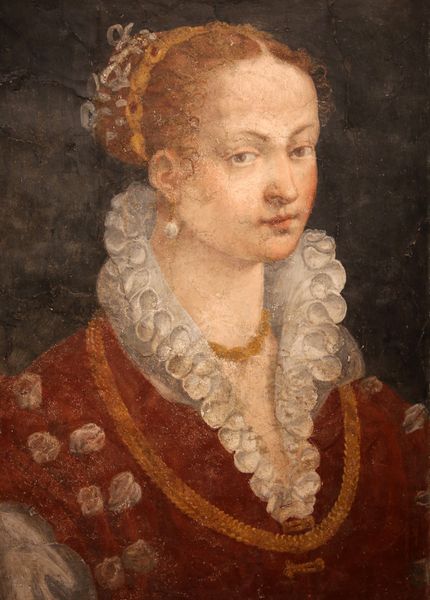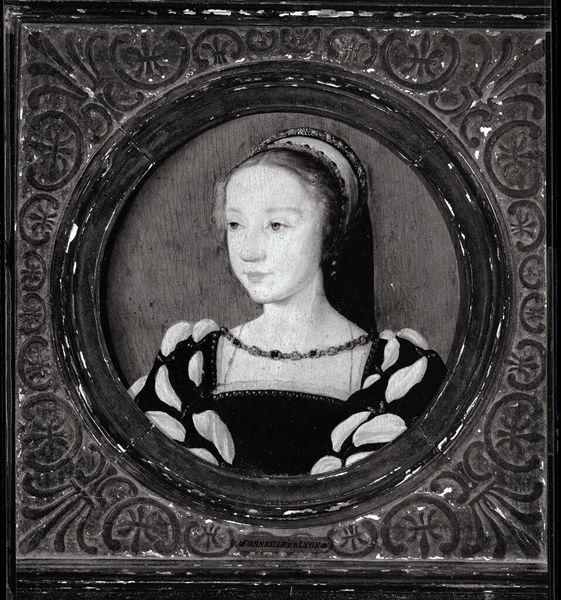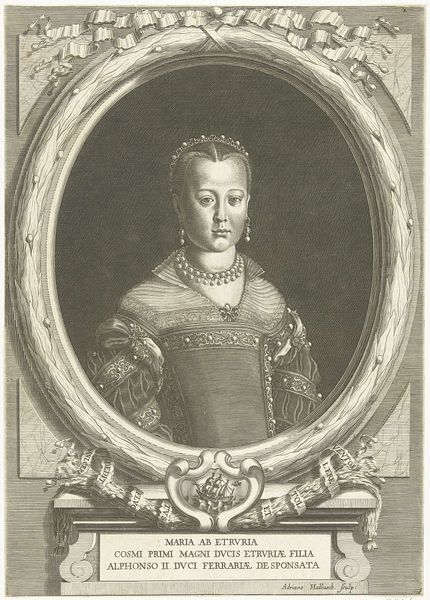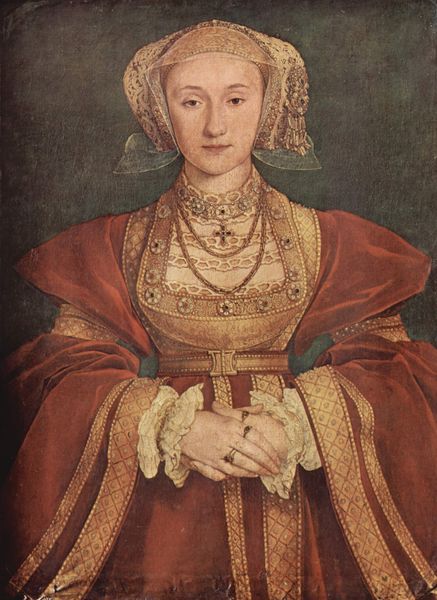
painting, oil-paint
#
portrait
#
painting
#
oil-paint
#
mannerism
#
history-painting
#
italian-renaissance
Copyright: Public domain
Curator: Editor: Here we have Agnolo Bronzino’s "The Ailing Eleonora da Toledo," painted in oil around 1556. It’s…intimate, I think, yet distanced. The cool formality seems very deliberate. What’s your reading of it? Curator: Let's start with the context. Eleonora wasn't just a woman; she was a political figure. What can Bronzino's meticulous rendering of her garments, jewelry—all products of labour and material extraction—tell us about the construction of her power and status? Consider the global networks needed to obtain the pigments for his oils. How do the materials speak to the political and economic reality she inhabited? Editor: So it's about showing, through material, her economic power? The pearls, the dress fabric... They weren't just pretty, they were statements. Does her "ailing" state shift the focus? Does it humanize her, or further showcase wealth considering medical treatment at the time? Curator: Perhaps both? Bronzino draws our eye to the material indicators of her station, yet highlights what can't be bought. Her physical body and, subsequently, the painting become sites of vulnerability. Are we looking at a compassionate portrait, or a study of consumption itself, of life rendered through possessions, health as another kind of precious commodity? Editor: That's fascinating, framing her sickness as another aspect of consumption. I initially saw the portrait as simply beautiful, but understanding the materials and production reframes the subject. Is it meant as critique, or observation? Curator: What if critique and observation were not opposed here? Mannerism loves this tension. It poses a visual problem of power. The painting becomes more than her likeness. The labour and resources put into it underscore the social structures and class distinctions that both confined and elevated her. It makes me question what her position means, what she has and lacks, and all in one painted surface! Editor: Right, that's incredibly insightful. I appreciate that this opens up other avenues to understanding the piece. Curator: Indeed, it shifts the reading. From "a portrait of Eleonora," to an embodiment of complex networks that materialized power and mortality during the Renaissance.
Comments
No comments
Be the first to comment and join the conversation on the ultimate creative platform.

